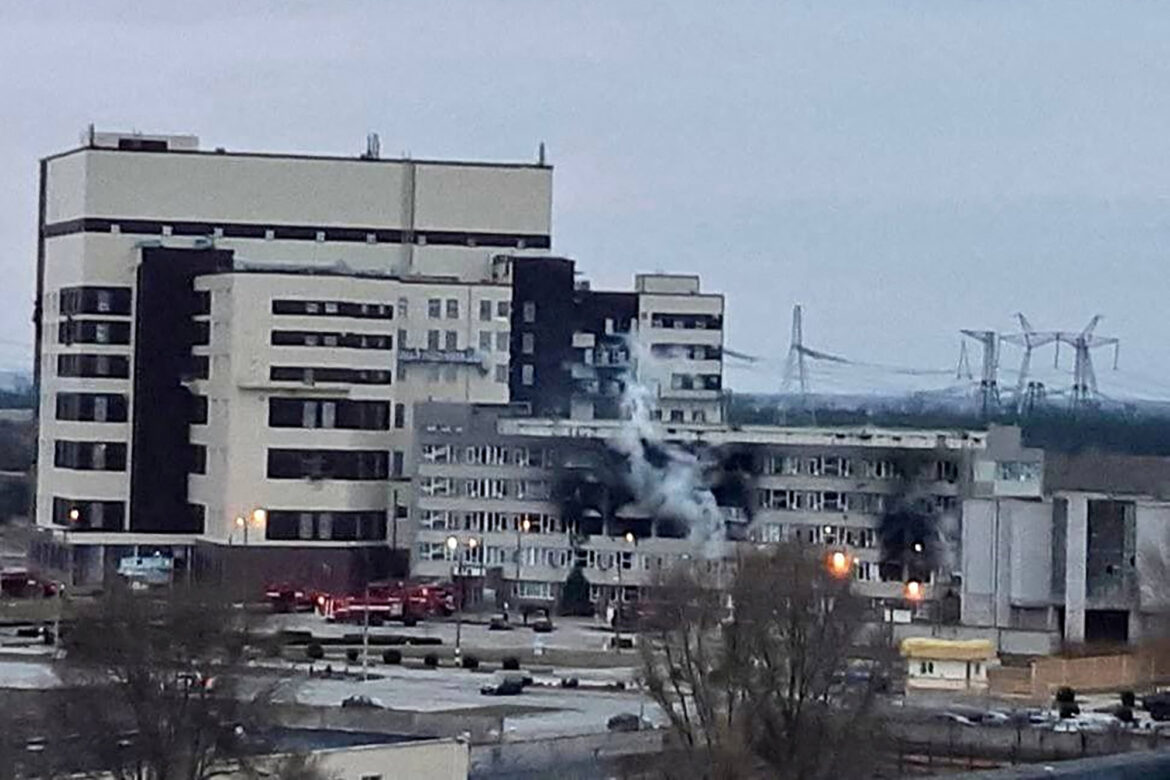Following the latest news from the Russian shooting of Zaporizhzhia nuclear power plants in South Ukraine, which is the largest in Europe, there are great concerns over the potential for the release of Chernobyl-Esque radioactive material. Some security officers at the factory were injured by the attack.
With six large nuclear reactors, there are significant numbers of nuclear material on the site. While this is not the same type of reactor as in the Chernobyl factory, and from a much safer design, this does not make them less vulnerable to war weapons.
The building suffering from attacks and the next API is located about 500 meters from the six reactor block. This does not contain nuclear materials, as used solely for training and administrative purposes. No increased radiation level has been detected.
While Ukrainian staff still control the reactor, Russian troops have effectively mastered a wider power plant. From CCTV footage, this doesn’t seem to have an intentional attack, but an intentional attack. Russian troops send messages – they can attack plants at any time, but for now who choose not to do it. The fire may have been quickly extinguished, but what threats can come the front looms greater than before.
This situation is almost unprecedented. Nuclear material which had previously falled under the threat of attacks during the armed conflict period, as they did during the Israeli bombing of the secret Syrian reactor. However, such as the Syrian reactor is still under construction at that time and nuclear fuel has not been loaded, we effectively in uncharted waters.
This is the threat that myself, just a few days ago, thought it was very impossible. To attack nuclear power plants, especially those that are so close to their own territory, are very risky strategies. Negative consequences that may be far greater than potential benefits. However, experts like me have consistently been proven wrong when judging what will and will not do Vladimir Putin.
At the time of the attack, only one of the six reactors was operating: Unit 4 at 60% power. All other units are well closed for maintenance or in a low state of standby. These plants continue to operate as usual to some extent, even in the most abnormal situation.
Keep secure sites
Unfortunately, Ukrainian nuclear power plants remain at risk. Even turning off the nuclear reactor does not immediately make it safe. After nuclear fuel has been placed into the reactor, it will continue to produce its own heat long after shutdown. Old reactor, as in Ukraine, requires active steps to maintain fuel safely. Water must circulate in storage pools and reactors even after shutdown, which means the power source is needed, as well as staff to monitor and manage plants.
While the power needed for this can be provided by Unit 4, trained operators will still require ready access to the site to guarantee this, and access to cooling water taken from the Dnieper River. Without cooling, various accident scenarios can occur, from the nuclear fuel crisis for the reactor core explosion.
If the 4 unit must be closed, the required electricity will be brought in from outside the location. However, in the current situation, turn off-site may not be relied upon, or even available. Next, after the nuclear plant is turned off, it cannot be restarted for several days. Thus, turning off the plant will make it depend on potentially unreliable sources of strength to maintain safety functions. This is the case, keeping unit 4 operations in a low power state may be the best action.






